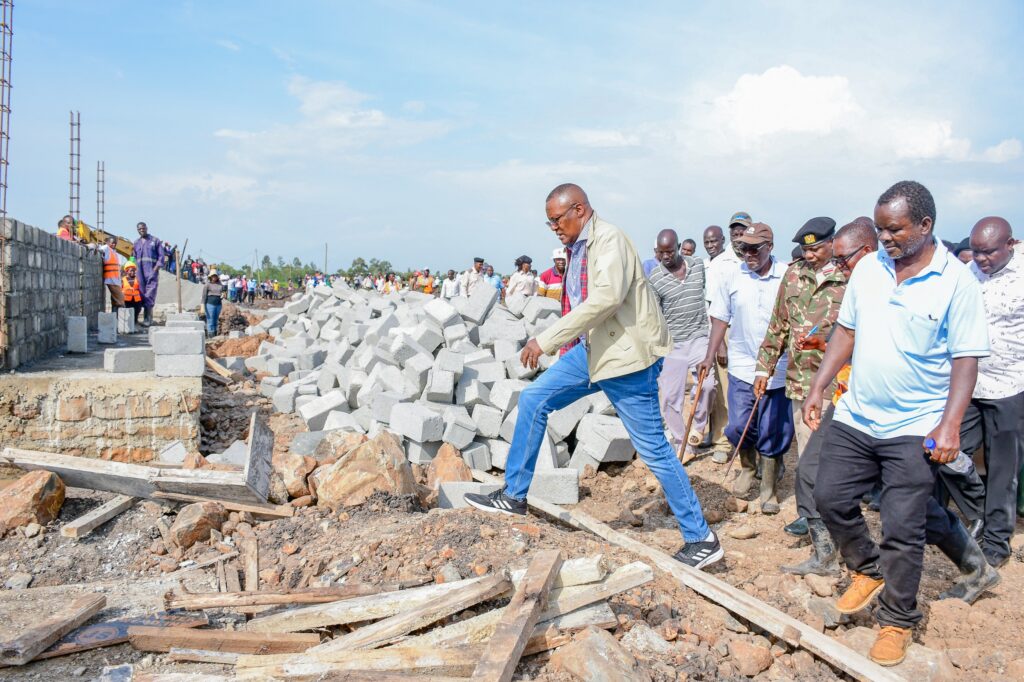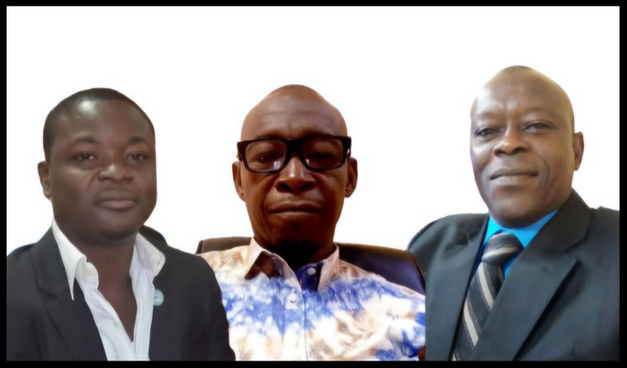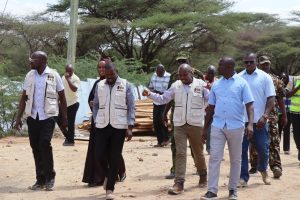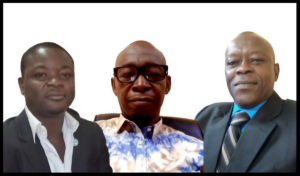Deputy Chief of Staff Performance and Delivery Management, Mr Eliud Owalo, on an inspection tour of the Kabonyo Regional Fisheries and Aquaculture Service and Training Center of Excellence in Nyando, Kisumu County. PHOTO/UGC.
By OLUOCH KANINDO
For decades, the persistent decline of fish stocks in Lake Victoria has posed a grave threat to the livelihoods and food security of millions living around the lake.
Overfishing, habitat destruction, pollution, invasive species such as the Nile perch, and climate change have all contributed to the dramatic reduction of native fish populations — including the near-extinction of several endemic species.
This ecological crisis has led to dwindling catches, economic hardship for fishing communities, and a loss of biodiversity, further undermining the lake’s overall health.
However, there is renewed hope that this long-standing crisis may soon be reversed, thanks to strategic interventions and the establishment of the Kabonyo Regional Fisheries and Aquaculture Service and Training Centre of Excellence in Kisumu County.
Last week, Deputy Chief of Staff for Performance and Delivery Management, Eliud Owalo, conducted an inspection tour of the facility in Nyando, Kisumu County. He was accompanied by Victor Nyagaya, CEO of the Lake Region Economic Bloc (LREB), as part of an inspection and verification mission. Currently, the facility is 30% complete.
“The government is committed to the completion of this project and, more broadly, to strengthening the blue economy in the Lake Victoria region. I can assure you that within the next 30 months, this centre will be fully operational,” Owalo stated.
Launched on 1 November 2024, the Kabonyo Centre is a flagship initiative under the State Department for Blue Economy and Fisheries. It aims to enhance value chains within the blue economy by supplying fingerlings to fisher-folk in the Nyanza region and supporting the restocking of Lake Victoria. Construction is being undertaken by the main contractor, Vitafort Agro Ázsia Zrt.
The facility will comprise a Nile Perch Technology and Innovation Centre, an Aquaculture Resource Centre, and the Kenya Fishing School. At its core will be a fingerling production unit, expected to yield up to seven million fingerlings per quarter — including tilapia, catfish, and common carp — for both lake restocking and local aquaculture ventures.
In 2021, Kenya’s annual aquaculture production was 21,076 metric tonnes (MT), falling significantly short of the projected 350,000 MT target for 2030. To bridge this gap, there is an urgent need to invest in aquaculture, diversify cultured species, and improve fish farming practices for enhanced food security, nutrition, and economic value.
The Kabonyo Centre is jointly funded by the Governments of Kenya and Hungary, with a total budget of USD 9,997,000. The investment forms part of a broader strategy to revitalise the Lake Victoria ecosystem, bolster food security, and generate sustainable economic opportunities for the over two million people who depend on the lake for their livelihoods.
Owalo emphasised the project’s regional importance, saying, “This centre is a testament to what we can achieve through partnership and vision. Our goal is a vibrant blue economy, a restored Lake Victoria, and prosperity for our people.”
He further noted that the training centre would equip local communities with modern fishing techniques. To further strengthen the sector, the government plans to establish fish landing sites with adequate cold storage facilities to reduce post-harvest losses.
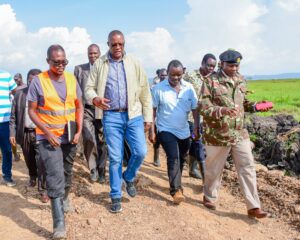
Deputy Chief of Staff Performance and Delivery Management, Mr Eliud Owalo, accompanied by other leaders at the Kabonyo Regional Fisheries and Aquaculture Service and Training Center of Excellence in Kisumu County that is under construction. PHOTO/UGC.
“With the ongoing upgrade of Kisumu International Airport, it will soon be possible for our fisher-folk to access and export to international markets directly,” Owalo added.
Victor Nyagaya, CEO of the LREB, underscored the collaborative nature of the initiative, noting that its benefits would extend beyond Kisumu to neighbouring counties including Siaya, Homa Bay, Migori, and Busia.
“This is not just a Kisumu project,” Nyagaya said. “It’s a regional asset that will drive economic growth, innovation, and food security for all our people.”
Beyond infrastructure, the centre will promote research, training, and best practices in fisheries and aquaculture. By providing quality fingerlings and modern skills to fisher-folk, the project aims to reverse fish stock decline and reinvigorate communities affected by environmental degradation.
Currently, the main cultured species include Nile perch, tilapia, and African catfish. The introduction and selective breeding of other species — such as common carp and milkfish — will further diversify aquaculture offerings in the region.
Officials noted that the Kabonyo Centre aligns with Kenya’s Vision 2030 and the United Nations Sustainable Development Goals (SDGs), particularly in areas of food security, economic development, and environmental sustainability. It is expected to serve as a model for similar projects across the region and significantly contribute to the national blue economy agenda.
Additional objectives include increasing employment opportunities, enhancing community resilience to climate change through adaptive aquaculture systems, and establishing gene banks to support the conservation and diversity of fish species.
As the inspection concluded, Owalo commended the construction team for their dedication and urged them to maintain momentum to ensure timely completion. He reiterated the government’s commitment to supporting initiatives that deliver tangible benefits to local communities and safeguard the future of Kenya’s vital water resources.
The Kabonyo Centre is poised to become a cornerstone of sustainable fisheries in the region, promoting fish breeding, responsible resource management, and community-led aquaculture innovation.
By restoring fish populations and supporting economic recovery, it aims to revitalise the Lake Victoria basin and secure a sustainable future for both the lake and the people who depend on it.




